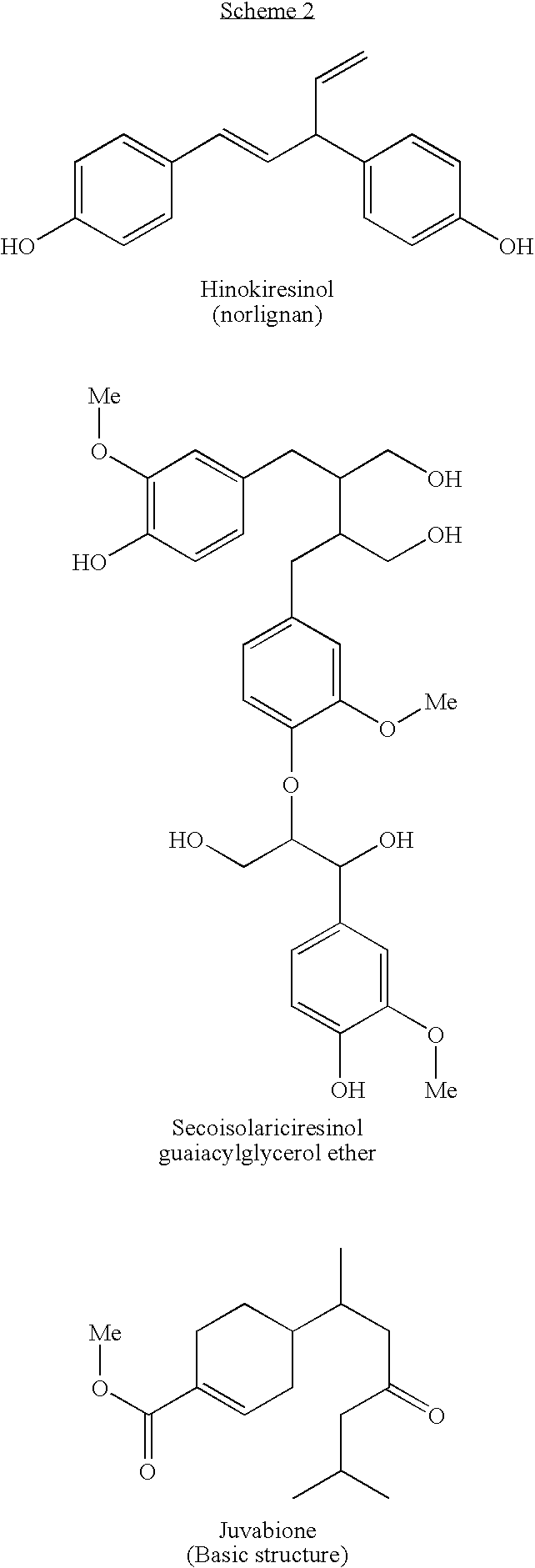Use of knotwood extracts
a technology of knotwood and extract, which is applied in the field of knotwood extract, can solve the problems of single lignans or other phenolic compounds, low extract yield of such materials, and pulp quality, and achieve the effect of preventing oxidative deterioration and preventing yellowing
- Summary
- Abstract
- Description
- Claims
- Application Information
AI Technical Summary
Benefits of technology
Problems solved by technology
Method used
Image
Examples
Embodiment Construction
cants against oxidation, as antioxidant in adhesives, in food, in cosmetics, in packing, in paints and dispersions; as biocides, especially fungicides, bactericides or insecticides; as wood preservatives or in paper to prevent yellowing.
DETAILED DESCRIPTION OF THE INVENTION
[0012]The basis for this invention is an investigation where we applied three different antioxidant tests to 13 well-defined hydrophilic knotwood extracts or fractions of the same, derived from commercially important wood species. Surprisingly, when the antioxidative properties of the extracts or fractions thereof were compared to antioxidative properties of pure wood-derived phenolic compounds, it was found that the extracts as such or fractions of the same were more effective antioxidative substances than the single phenolic compounds.
[0013]A method for isolating of phenolic substances or juvabiones by extraction of knotwood is described in WO 02 / 098830.
[0014]The term “phenolic substances” shall be understood to...
PUM
| Property | Measurement | Unit |
|---|---|---|
| dielectric constant | aaaaa | aaaaa |
| height | aaaaa | aaaaa |
| height | aaaaa | aaaaa |
Abstract
Description
Claims
Application Information
 Login to View More
Login to View More - R&D
- Intellectual Property
- Life Sciences
- Materials
- Tech Scout
- Unparalleled Data Quality
- Higher Quality Content
- 60% Fewer Hallucinations
Browse by: Latest US Patents, China's latest patents, Technical Efficacy Thesaurus, Application Domain, Technology Topic, Popular Technical Reports.
© 2025 PatSnap. All rights reserved.Legal|Privacy policy|Modern Slavery Act Transparency Statement|Sitemap|About US| Contact US: help@patsnap.com



